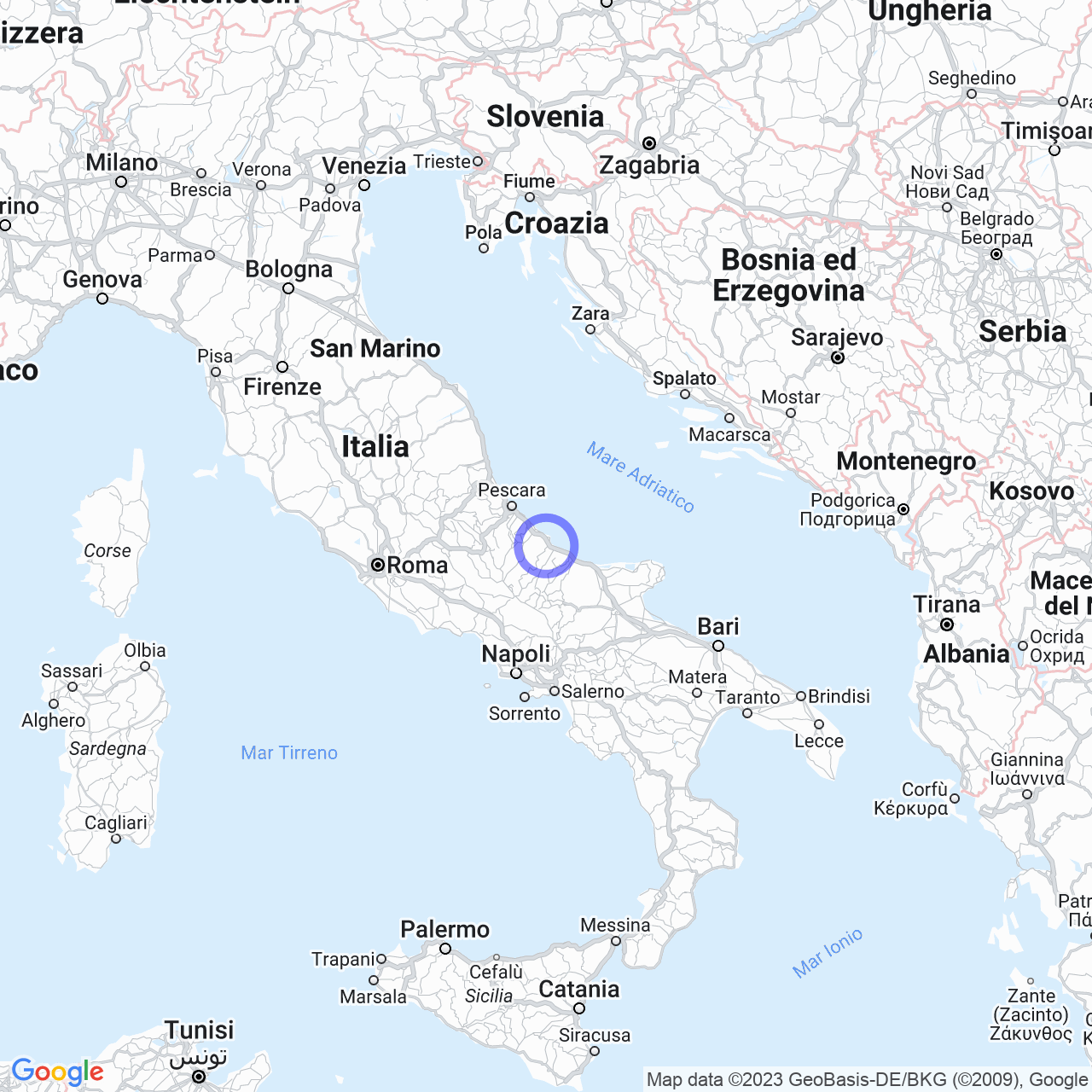Monteodorisio
Monteodorisio: A Historical and Cultural Treasure to Discover
Monteodorisio is a town in the province of Chieti, Abruzzo. With a population of inhabitants, it is part of the Medio Vastese Mountain Community. The city has historical precedents dating back to the Norman period, as evidenced by the D'Avalos Castle, but with the influence of the various powers that have governed the area, the city has been enriched architecturally and culturally over the centuries.
The History of Monteodorisio
During the period of Guglielmo II d'Altavilla, Monteodorisio was mentioned in the Catalogus Baronum as "Mons Odorisius" or "Monterisi." In 1348, it was granted to the Camponeschi of L'Aquila with the title of county. Later, it followed the events of the Kingdom of Naples and, in the fifteenth century, passed to the D'Avalos.
The Church of San Giovanni Battista is an important monument that preserves the original thirteenth-century layout with foundation walls and a bell tower. The Castle of Monteodorisio is located on the top of the plateau and houses the Museum for the economy between antiquity and the Renaissance and the documentation center of the Franciscan Order in Abruzzo and Molise.

Monuments and Places of Interest
Religious Architecture
The Church of San Giovanni Battista is located in Via Duca degli Abruzzi and is of Neoclassical style. The ruins of the Convent of San Francesco d'Assisi are located in Via Vittorio Emanuele III. The original layout dates back to 1334, but the church was destroyed for the erection of the Municipality, while the monastery was destroyed after the suppression of the order of the Regular Conventual Friars. The ruins of the Convent of San Bernardino with a vaulted apse and a trussed nave date back to 1442.
Finally, the Sanctuary of Madonna delle Grazie dates back to the nineteenth century and is located in Via Madonna delle Grazie.
D'Avalos Castle
The castle was built by the Normans as a defensive fortress, later passed to the Counts of the Marsi family, and then ceded to the D'Avalos in the fifteenth century. The walls and three of the original four towers are still visible. The western tower is embellished with corbels and a relief frieze. The castle now has the appearance of a fortified noble palace, where the headquarters of the Museum of Local Costume is hosted.
Civil Architecture
The fortified village of Monteodorisio with the Castle of Monteodorisio and the adjacent Museum for the economy between antiquity and the Renaissance is another historical and cultural treasure. The Suriani Palace stands on three floors above ground, concluded by the attic with inclined sloping covering. The design, drawn up in 1840 by the architect Michelangelo Romano, is the typical expression of the noble house realized on a rectangular plan with a rigid distribution of the environments around an axis of symmetry which, perpendicular to the main façade, crosses the entrance hall, the courtyard, and the stair.
Conclusions
In conclusion, Monteodorisio is a town that has much to offer in terms of history and culture. The numerous religious and civil architectures of the city make a visit to the city an extraordinary experience. And even though the city is relatively little known, it certainly deserves a visit to discover its hidden historical and cultural treasure.
